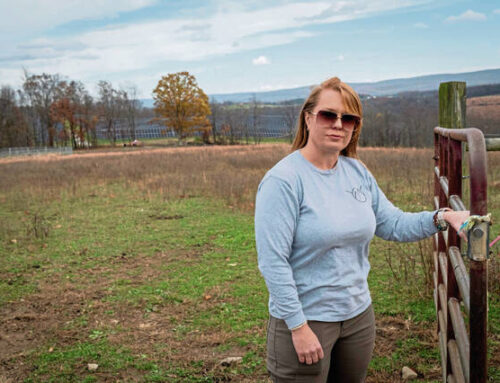Goodbye to energy dependence – Alaska discovers more than 1,100 TWh hidden under the ice,
May 25, 2025
For decades, energy independence has been the elusive white whale of U.S. policy. We’ve tried offshore drilling, shale booms, solar panels, and wind farms the size of small towns. But the next big thing might not come from the desert or the sky… it might come from beneath a frozen river in Alaska.
Scientists have confirmed that under the surface of rivers like the Yukon, even when frozen over for months, the water keeps flowing. And with it, a massive, untapped stream of energy. The kind of energy that doesn’t need to be mined, fracked, or imported. In fact, this kind of energy just keeps going.
According to recent studies led by the University of Alaska Fairbanks (UAF), these rivers could provide access to over 1,100 terawatt-hours (TWh) of renewable electricity per year —a third of the United States’ total annual electricity usage.
Not a dam. Not a pipe dream.
This isn’t some far-off fusion fantasy or a giant dam that floods entire valleys. It’s called hydrokinetic energy, and it works by placing specially designed turbines into flowing water beneath ice, capturing the kinetic force without disrupting ecosystems or requiring expensive infrastructure.
The turbines in question, dubbed Reactive Reversible Blade Turbines (RRBTs), are engineered to spin in slow-moving rivers, even when trapped under thick layers of winter ice. Backed by a $1.5 million grant from the Department of Energy, researchers are currently testing these systems on Alaska’s Tanana River. The goal is to create a new generation of local energy solutions for off-grid and indigenous communities, many of which still rely on expensive diesel generators flown in by air or barged up river in the summer.
And unlike solar or wind, this power doesn’t quit when the sun disappears or the air gets still. The rivers flow year-round, even when the surface freezes solid —making them a near-constant source of clean energy in places that desperately need reliability.
What does 1,100 TWh even mean?
Let’s break it down. Because “terawatt-hours” is a number that sounds impressive — but what does it actually translate to?
- Enough energy to power 100 million homes for an entire year
- Roughly 30% of the U.S.’s total electricity consumption
- Far more than the yearly output of all solar panels currently installed in the U.S. combined
Even if just a small portion of that capacity is tapped, it could provide a stable, locally managed power source for remote areas that have never had reliable electricity. And that’s not counting the economic benefits of training locals to build, maintain, and scale the infrastructure.
Who’s leading the charge?
This isn’t a flashy Silicon Valley startup. The brains behind the project are a coalition of public researchers and engineers:
- University of Alaska Fairbanks (UAF) and the Alaska Center for Energy and Power (ACEP)
- Tech support and design from Creek Tides Energy and Power, and the Southwest Research Institute
- Support from the Pacific Marine Energy Center, an arm of the U.S. Department of Energy
Other countries are already putting hydrokinetics to work. In Scotland, the MeyGen tidal array is powering thousands of homes. In New York, turbines spin silently beneath the East River. Canada’s northern territories are turning to river power for remote villages that used to rely on diesel drums.
So no, Alaska isn’t the first to play this game. But with the scale of its river systems and the brutal winters that limit solar options, it might just be the best test case yet.
Energy independence might just be… wet?
We’ve spent decades trying to break up with fossil fuels. And while solar and wind have made huge progress, they’re not always reliable. Cloudy skies, still air, frozen nights — they all take their toll. But the rivers? They never stop.
What’s buried under the Yukon’s frozen surface isn’t oil or gold. It’s the chance to change how the U.S. powers itself. So maybe it’s time we stop chasing what’s buried deep underground and start paying attention to what’s been moving right under our noses. Or in this case, under several feet of frozen Alaskan river water.
Search
RECENT PRESS RELEASES
Related Post




